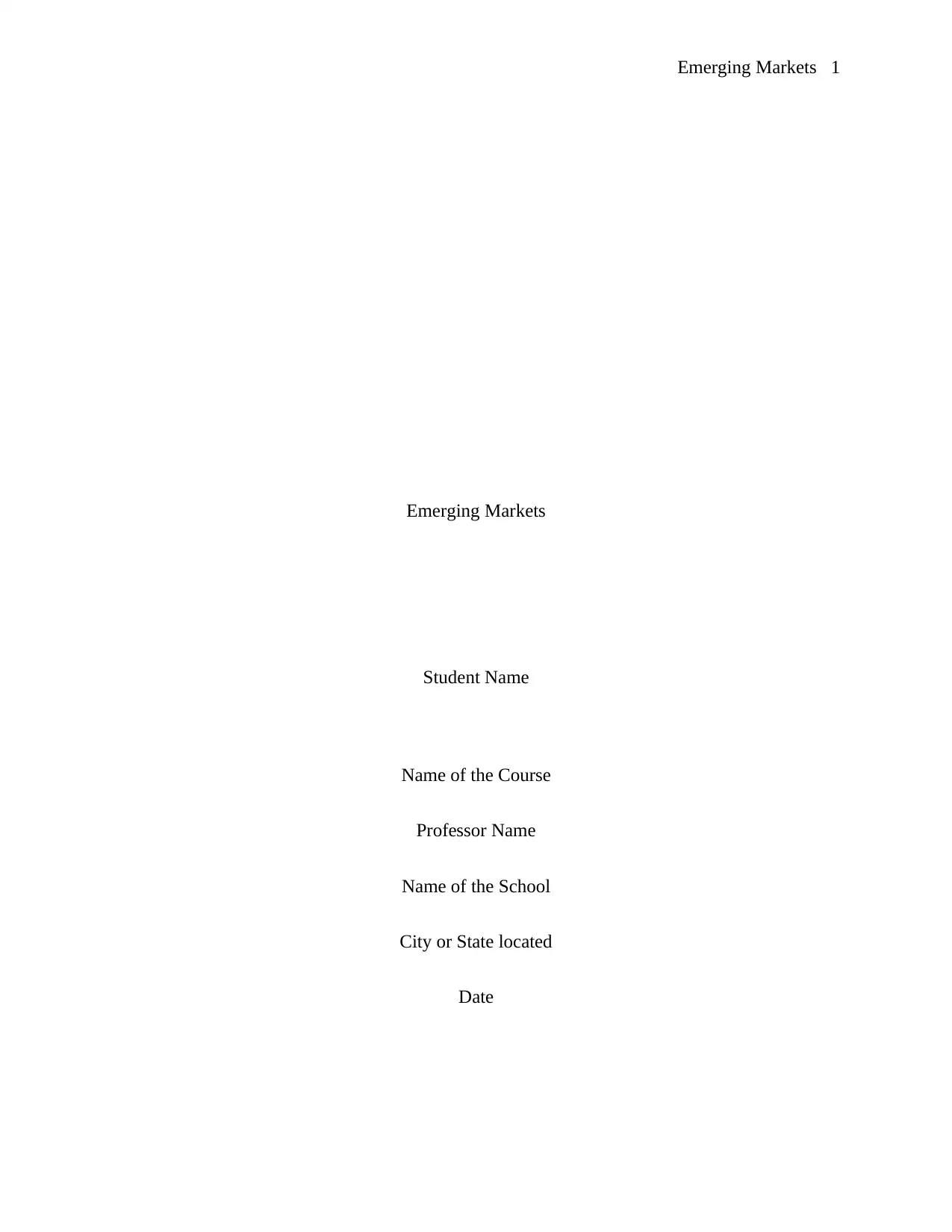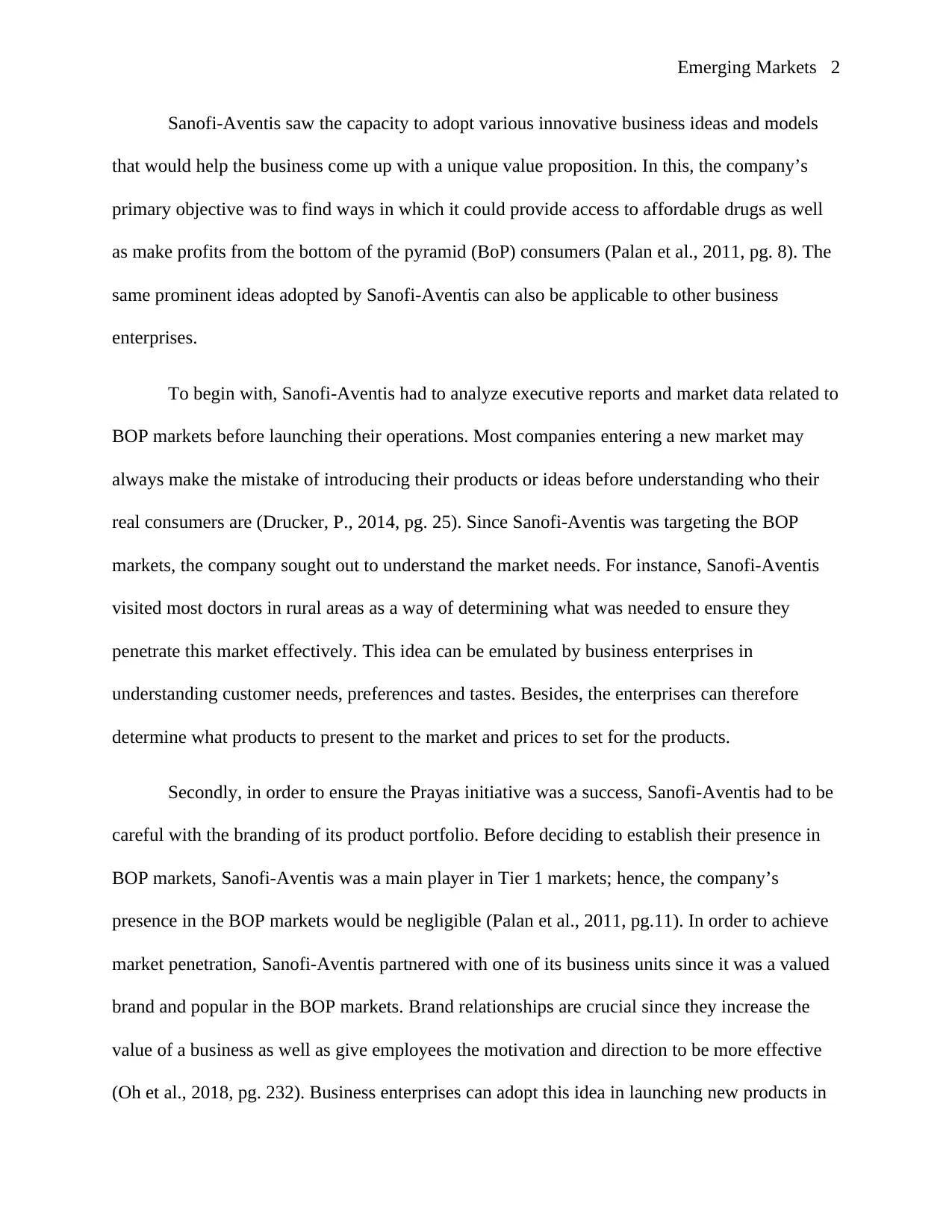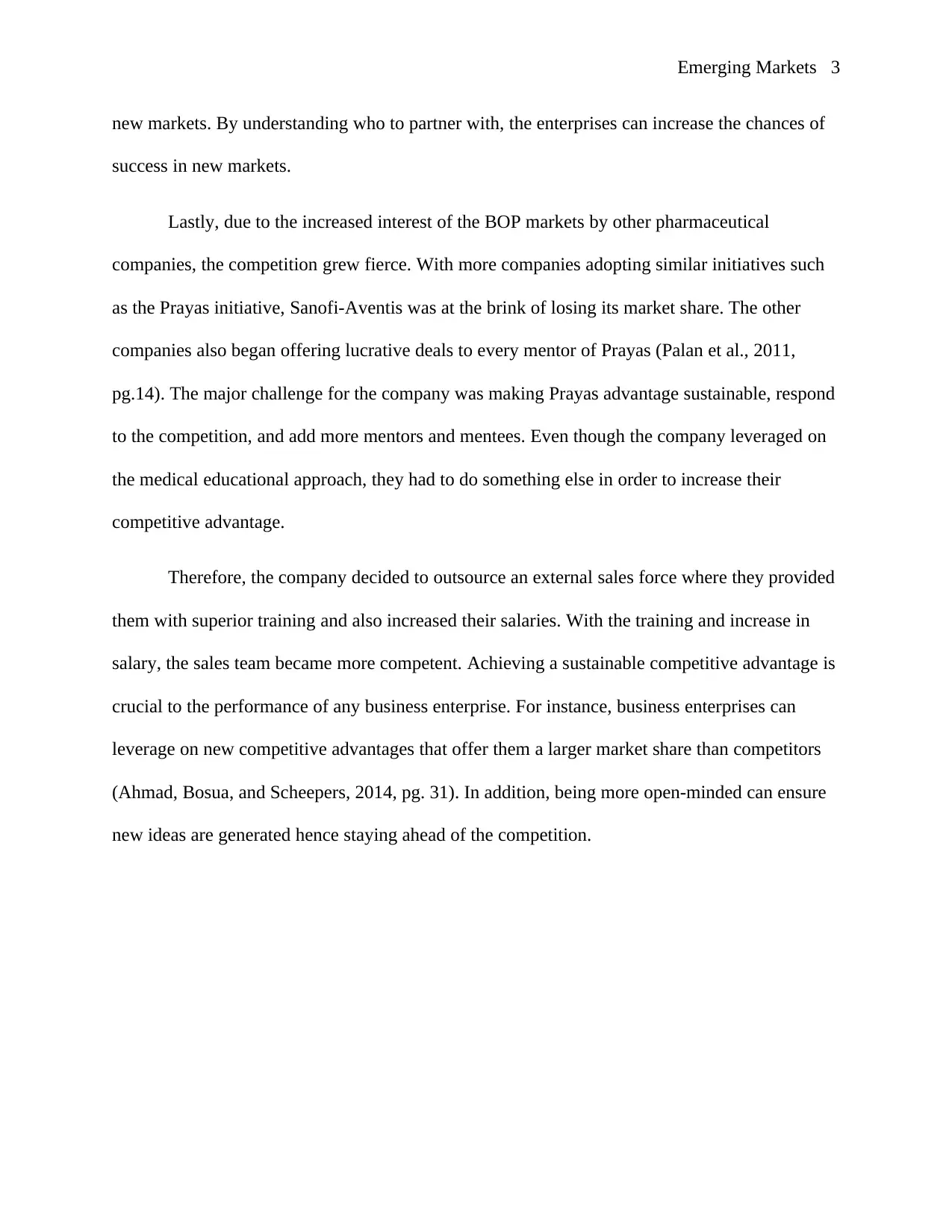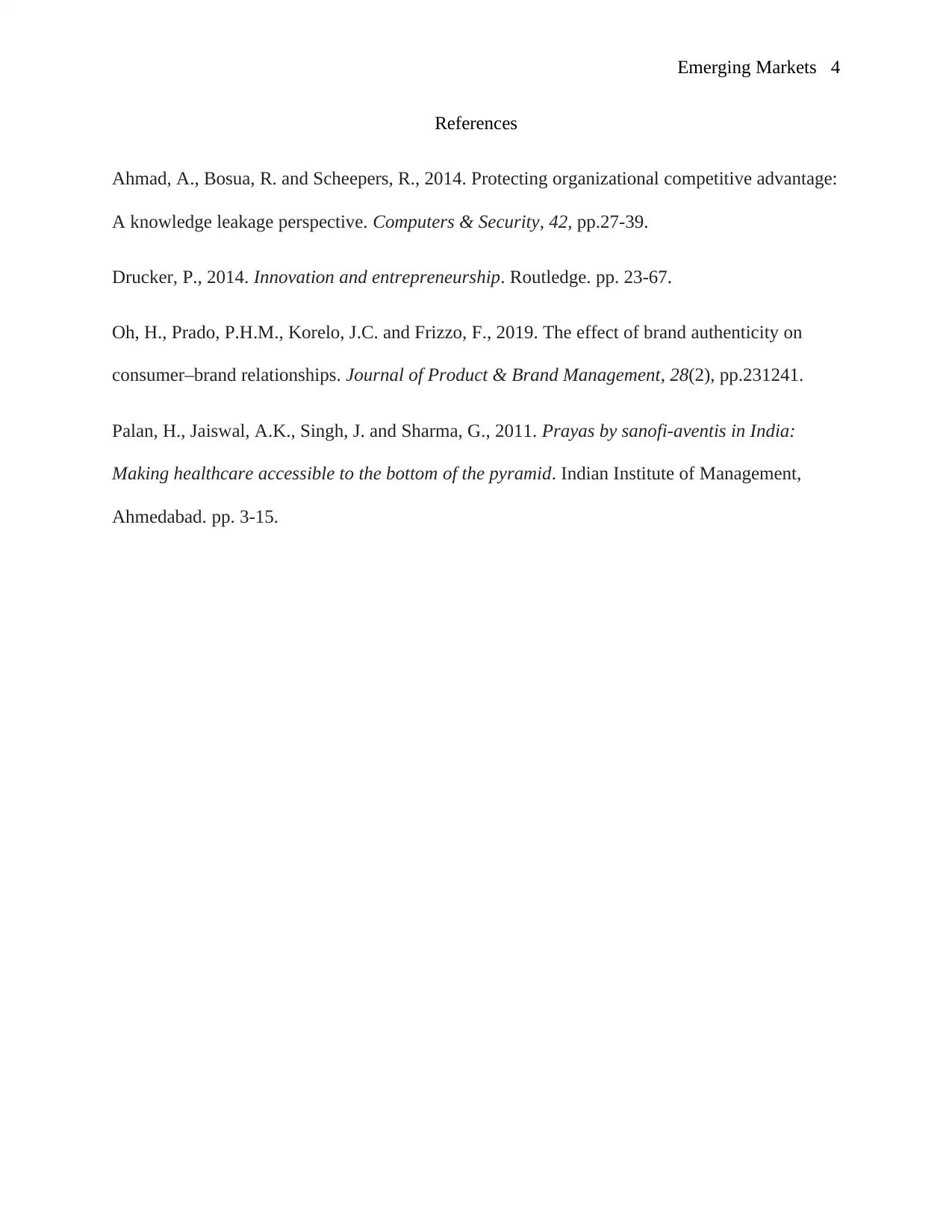Case Study Analysis: Sanofi-Aventis and the Prayas Initiative
VerifiedAdded on 2023/01/10
|4
|789
|83
Case Study
AI Summary
This case study examines Sanofi-Aventis's Prayas initiative in India, focusing on their strategy to provide affordable healthcare to the bottom of the pyramid (BoP) consumers. The company analyzed market data, understood consumer needs through doctor visits, and carefully managed its brand partnerships to penetrate the market. Faced with increasing competition, Sanofi-Aventis outsourced an external sales force, providing them with superior training and increased salaries to maintain a competitive advantage. The analysis highlights the importance of understanding market needs, strategic branding, and adapting to competitive pressures in emerging markets. The case study emphasizes the need for sustainable competitive advantages through innovation and open-mindedness to generate new ideas. The solution analyzes key decisions, challenges, and outcomes, offering valuable insights into business strategy and market penetration in the pharmaceutical industry.
1 out of 4











![[object Object]](/_next/static/media/star-bottom.7253800d.svg)